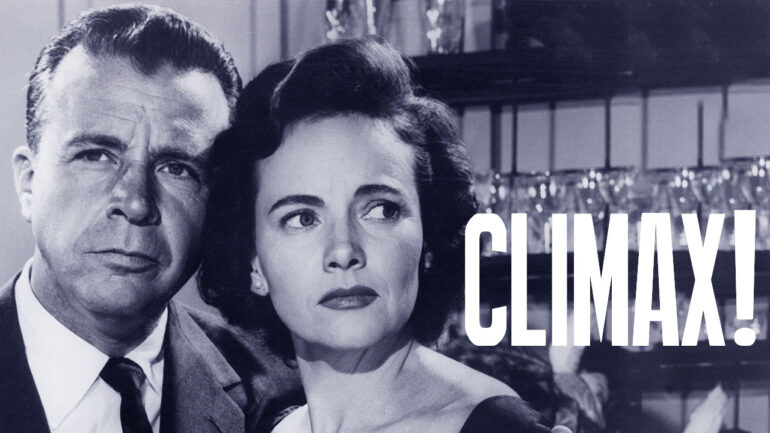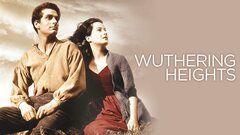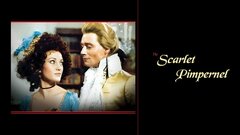Merle Oberon was born Estelle Marie Thompson on Feb. 19, 1911, but the story of her origins ranked among the most convoluted and uncertain for a Golden Age performer of her stature. She was born in Mumbai to Constance Selby, a Eurasian girl who was only 15 years old and British engineer Arthur Thompson. Selby's mother, Charlotte, raised Oberon and pretended to be her birth mother in later years, when in actuality, she was the child's grandmother. As a result of this deception, facts about Oberon's childhood are few, though it was known that those early years were marked by poverty and racial prejudice stemming from her mixed heritage.
At some point, Oberon was known under the name Queenie Thompson and began to act on stage as part of a Calcutta drama society. An actor who had a romantic interest in her suggested that she move to France, where he promised to recommend her to director Rex Ingram, who ended up giving the teenager a small part in his film, "The Three Passions" (1929). Oberon - accompanied by her grandmother - then traveled to England and had small roles in several other movies over the next few years.
That anonymity changed when she caught the eye of producer-director Alexander Korda, who put Oberon under contract with his new company and cast her in his historical biopic "The Private Life of Henry VIII" (1933). In the picture, she played the murderous monarch's second wife, Ann Boleyn, and while the part was secondary in nature, her unique look left an impression. "The Private Life of Henry VIII" was an important undertaking in the early days of British sound films and its success prompted Korda to launch a series of similar historical dramas. "The Private Life of Don Juan" (1934) placed Oberon opposite Douglas Fairbanks as an aging version of the famous libertine, while in "The Scarlet Pimpernel" (1934), Oberon displayed on-screen chemistry with Leslie Howard and made the most of a somewhat limiting role as heroine Lady Blakeney.
On the basis of these successes, Oberon was invited overseas to make her first American movie, the musical comedy "Folies Bergère" (1935) and her strong performance as the romantic interest of Fredric March and Herbert Marshall in "The Dark Angel" (1936) earned Oberon a Best Actress Academy Award nomination. During the shooting of "I, Claudius" (1937), Oberon was involved in a car accident from which she sustained some facial scars. Not enough footage had been shot for the film to be completed. When star Charles Laughton felt that he had been unable to do justice to the title character, it was decided to close the production down and leave it unfinished. Surgeons were unable to completely correct the damage Oberon sustained, but careful lighting and make-up application masked the flaws and she soon returned to the screen in her first Technicolor production, "The Divorce of Lady X" (1938).
Oberon returned to England for her most famous screen assignment as Cathy Earnshaw in William Wyler's adaptation of Emily Brontë's "Wuthering Heights" (1939). While the finished film went over well with critics and the public, the production was a less than happy experience. Co-star Laurence Olivier's relationship with the actress on-set was soured by his disappointment over Oberon being chosen for the part instead of Vivien Leigh. The pettiness ensued from Olivier did not come across in the leads' performances and they display wonderful romantic chemistry, making "Wuthering Heights" the penultimate romantic tragedy.
Oberon married producer-director Korda in 1939 and she soon concentrated her efforts on the American market in features like "'Til We Meet Again" (1940), "That Uncertain Feeling" (1941), and "Affectionately Yours" (1941). She was one of more than 80 stars to make up the once-in-a-lifetime cast of "Forever and a Day'' (1943), a historical drama created to raise money for the British war effort. Oberon then played an actress menaced by a Jack the Ripper-style killer in "The Lodger" (1944), a stylish and thrilling remake of Alfred Hitchcock's 1927 silent thriller. Cinematographer Lucien Ballard and his expert lighting placement - which included a light actually attached to the camera, later known as an "Obie" - made her face look especially luminous. The pair fell in love during production and married the next year, following Oberon's divorce from Korda.
Oberon's new relationship coincided with a gradual fading in her popularity, which was not helped by her roles in the Chopin biopic "A Song to Remember" (1945) and "Night Song" (1947). The film noir thriller "Berlin Express" (1948) ranked among the best movies she made in the U.S. Her marriage to Ballard ended in 1949 and Oberon tried to revitalize her career by heading to France for "Pardon My French" (1951). She remained there for the comedy "Dans la vie tout s'arrange" ("In Life Everything Works") (1952) before heading to England for "Affair in Monte Carlo" (1952) and Spain for the light-hearted fantasy "Todo es posible en Granada" ("Everything is Possible in Granada") (1954).
None of those pictures did much to raise her profile, but Oberon managed a notable return to Hollywood with moving supporting turns in Désirée (1954), "Deep in My Heart" (1954) and "The Price of Fear" (1956). However, offers again became scarce and she accepted an unusual outing as host of "Assignment Foreign Legion" (CBS, 1956-57), a British dramatic television series featuring guest players. During that time, she wed her third husband, Bruno Pagliai, and the couple had two children. Pagliai was her first mate to be outside the motion picture business and it ended up being the actress' longest-lasting relationship.
In 1960, Oberon received a star on the Hollywood Walk of Fame for her film work, but she remained away from movie screens until "Of Love and Desire" (1963). Her next credit was "The Epic That Never Was" (BBC, 1965) covered the making of "I, Claudius" and the factors that caused it to be shut down. She was also part of the all-star cast that checked into "Hotel" (1967), an adaptation of Arthur Hailey's best seller. After an absence of six years, Oberon had her final film appearance in the drama "Interval" (1973), an American/Mexican co-production that she also produced.
The story of an aging woman who falls for a young artist (Robert Wolders), the production turned out to be somewhat prophetic as Oberon proceeded to divorce Pagliai and wed Wolders. Oberon settled into retirement thereafter and did some traveling. Merle Oberon died of a stroke on Nov. 23, 1979 at the age of 68.











































































































































































































































